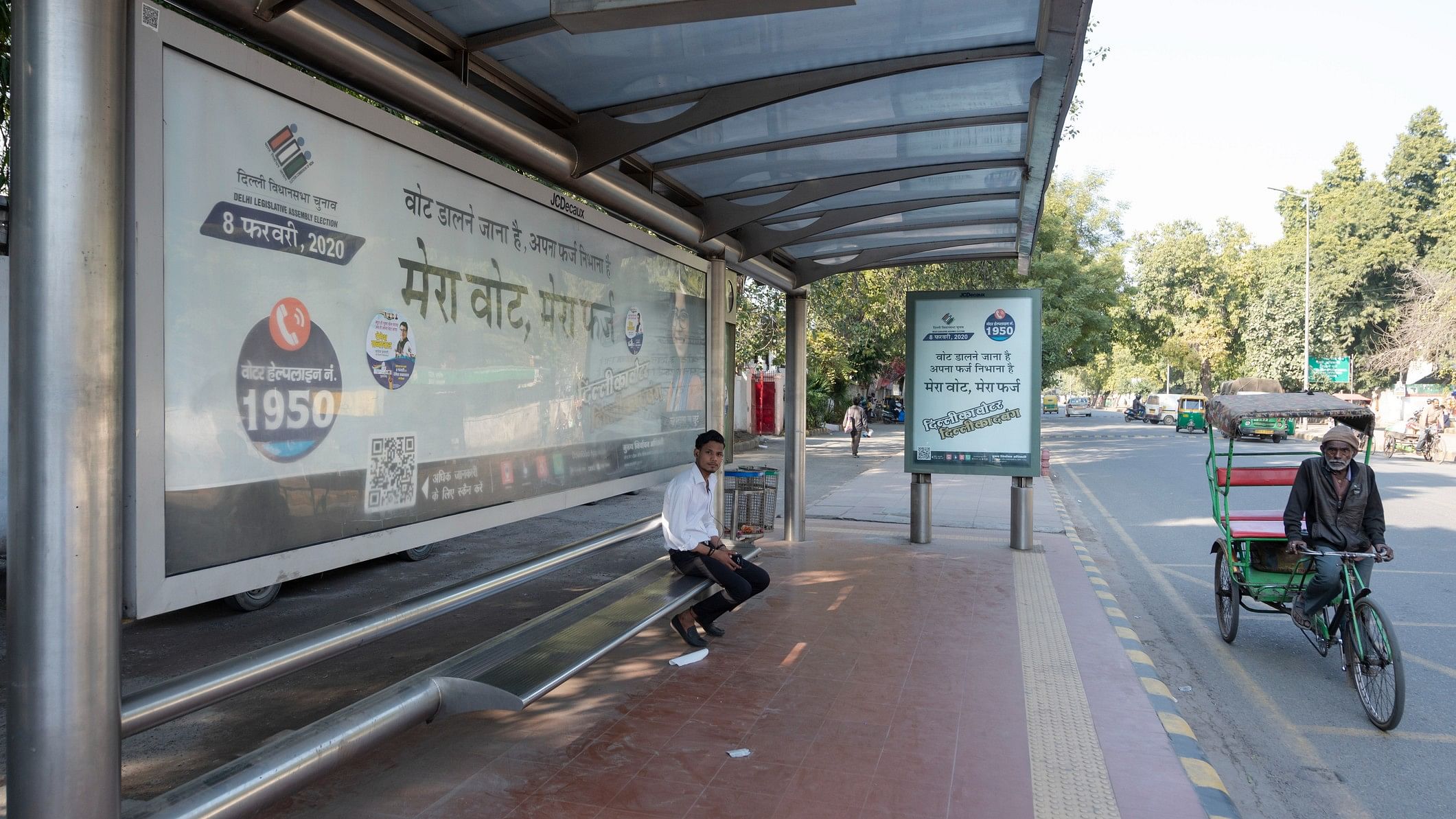
Representative image showing a bus stand in India with an advertisement by the Election Commission, urging people to vote.
Credit: iStock Photo
As India gears up for another general election, political parties are actively engaged in releasing their manifestos. Despite being a parliamentary election in India, these manifestos have not been limited to national issues; they have often raised state-related subjects.
In June 2023, the Congress drew attention with its winning formula of free ridership to women in public transport buses operated by State Transport Undertakings (STUs) in Karnataka and Telangana. This sparked interest across the political spectrum regarding the significance of transportation in electoral discussions. This is good as it not only sparks national-level discussions but also has the potential to catalyse much-needed reforms at the state level.
For many decades now, the bus transport sector in India has not received sufficient attention and support from the Union government. Mostly, bus transport services are entrusted with the STUs. While other sectors have experienced opening-up and divestment, the bus transport sector has been overlooked in discussions and initiatives to improve services. This lack of attention has hindered the development and modernisation of bus transport infrastructure and services across India.
There is considerable potential and readiness among local entrepreneurs to contribute to intracity and intercity bus operations across India. However, rather than permitting private operators at the local level with stage carriage permits, the Union government has been advocating for the All India Tourist Permit (AITP) in recent months.
Kerala stands as a historical example of success in bus operations, with over 80 per cent of the bus operators in the private sector for many decades. This shows that good public policy can augment the introduction of private operators in the sector, improving accessibility and availability of public transport while maintaining adequate services. The popular free-ridership scheme by the STUs is not necessary or optimal to achieve this goal, as better outcomes can be attained through the right policy changes.
While efforts such as JnNURM, the smart city project, PM e-bus sewa, and special subsidy schemes in FAME have aimed to improve city bus services and address Climate Change challenges, a comprehensive policy shift is still needed to drive sustainable and efficient public transportation solutions. This will require strategic planning, increased investment, and revamped regulatory frameworks.
The recent Karnataka government order on surge pricing by taxi aggregators has underscored the importance of a policy shift and strategic planning in the transport sector. Governments have taken a stance aligned with taxi unions and associations, advocating for fixed taxi fares set by the government and urging aggregators to adhere to these fares throughout the day, including peak hours. Rather than allowing market forces to determine fares and fostering a free and competitive market environment, governments have opted to maintain the outdated practice of regulating taxi fares, which includes levying to-and-fro charges on riders. Moreover, by banning operators from providing two-wheeler services, governments have restricted aggregator supply and hindered sector growth, thereby impeding efficiency improvements.
Traditional taxi and auto unions are often advised to confront new market entrants through legal avenues. However, discussions with these unions reveal a willingness to reassess their billing and operational practices. Unfortunately, they often lack clarity regarding government policy, which hinders their ability to make independent decisions. While governments express concern over surge pricing, it can benefit drivers by allowing them to earn more and negotiate fares based on challenging conditions such as adverse weather or heavy traffic. Yet, these rights are frequently denied to drivers, citing consumer protection and the dominance of large corporations.
Another crucial policy change that demands attention is the recognition and promotion of shared transportation services in urban and rural areas throughout India. While some provisions exist in the state-level Contract Motor Vehicle Acts, there could be a model act, as in the case of the Shops and Establishments Act of 2016. Shared services play a vital role in bridging the last-mile connectivity gap in urban areas and contribute significantly to enhancing public transport networks, especially in regions where mobility infrastructure is still in its nascent stages. Roads are narrow, making it challenging to introduce large buses.
Acknowledging and legally sanctioning shared services in the transportation sector can also encourage vehicle manufacturers to innovate their products, prompt the insurance market to respond effectively, and encourage improvements in fuel efficiency. This comprehensive approach has the potential to transform and enhance mobility options for disadvantaged communities in India.
During elections, political parties compete to promise job creation, improved education, and better healthcare systems for all. However, public transport remains largely absent from their political agendas, aside from grand projects like metro rail, which are not always the solution due to their high capital expenditure and maintenance costs. Unfortunately, political parties often overlook the significant local employment opportunities within the public transport sector. Implementation of recommended policies could potentially create over 10 million job opportunities.
A well-developed and seamless mobility network has the potential to propel our economic growth to new heights, fostering inclusiveness and local development in the process. India is witnessing a larger infrastructure revolution. Having built the hardware, it is time to offer an Application Programming Interface (API) to the improved infrastructure by revamping and reforming the policies related to public transport. This would enhance the speedier transition to being carbon neutral than imposing market-unfriendly practices that would be expensive to the public.
(D Dhanuraj is Chairman, and Nissy Solomon is Senior Research Associate, the Centre for Public Policy Research, Kochi.)
Disclaimer: The views expressed above are the author's own. They do not necessarily reflect the views of DH.